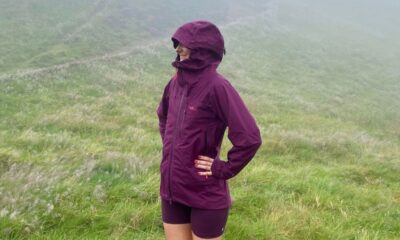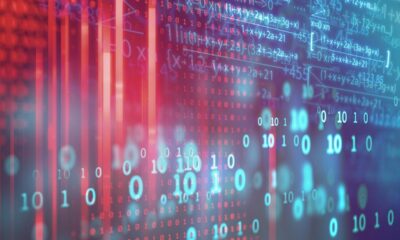Science
MIT Physicists Redefine Iconic Double-Slit Experiment in Quantum Study
Researchers at the Massachusetts Institute of Technology (MIT) have conducted a groundbreaking version of the double-slit experiment, a cornerstone of quantum physics, revealing new insights into the dual nature of light. Their findings confirm that the classical understanding of light as both a particle and a wave holds true, while also challenging some of Albert Einstein‘s long-standing views on the subject.
Revisiting the Double-Slit Experiment
The original double-slit experiment, first performed by British scientist Thomas Young in 1801, was pivotal in demonstrating that light behaves as a wave. In this experiment, a beam of light passing through two slits creates an interference pattern on a distant screen, contradicting the expectation that it would simply produce two distinct spots of light indicative of particle behavior. This phenomenon illustrates that light can exist in dual forms, but observing one aspect obscures the other.
Nearly a century ago, the experiment became a point of contention between Einstein and Danish physicist Niels Bohr. In 1927, Einstein posited that it should be possible to observe both the wave and particle characteristics of photons simultaneously, while Bohr countered that measuring one would eliminate any evidence of the other. Subsequent experiments have consistently supported Bohr’s interpretation of quantum mechanics.
In a significant advancement, the MIT team, led by Professor Wolfgang Ketterle, has conducted what they describe as the most “idealized” version of the double-slit experiment to date, stripping it down to its quantum essentials. Their study, published in the journal Physical Review Letters, utilized individual atoms as slits and weak beams of light, ensuring that each atom scattered at most one photon.
New Insights into Quantum Behavior
By preparing the atoms in different quantum states, the researchers were able to manipulate the information obtained about the path of the photons. Their results confirmed the predictions of quantum theory: the more information gathered regarding the photon’s path, the less pronounced the interference pattern became. This finding underscores the core principle that observing the particle nature of light diminishes its wave-like behavior.
“Einstein and Bohr would have never thought that this is possible, to perform such an experiment with single atoms and single photons,” Ketterle remarked. “What we have done is an idealized Gedanken experiment.”
In their experimental setup, the team cooled over 10,000 atoms to microkelvin temperatures and arranged them in a crystal-like lattice using laser beams. This configuration allowed for each atom to be treated as an isolated entity, enabling the team to investigate how a single photon behaves when interacting with two adjacent atoms.
Through meticulous adjustment of how tightly the atoms were held in place by the laser light, the researchers were able to influence whether photons exhibited wave-like or particle-like characteristics. This “fuzziness” of the atoms played a crucial role in their findings.
In an effort to test Einstein’s hypothesis regarding the detection of a photon’s path, the team created a scenario where the atom’s confinement was momentarily lifted. They observed that even without the “spring-like” mechanism traditionally used in previous experiments, the fundamental relationship between light’s wave and particle natures remained consistent. Their observations confirmed that the simultaneous detection of both behaviors is impossible.
“What we observed shows that the spring does not matter here; what matters is only the fuzziness of the atoms,” stated researcher Vitaly Fedoseev. This innovative approach to the classic experiment not only sheds light on longstanding debates in quantum mechanics but also aligns with the upcoming International Year of Quantum Science and Technology in 2025, marking a century since the formulation of quantum mechanics.
The MIT team’s work was supported by institutions including the National Science Foundation and the U.S. Department of Defense, highlighting the ongoing investment in quantum research and its potential implications.
As the field of quantum physics continues to evolve, the insights gained from this idealized double-slit experiment are expected to drive further exploration into the nature of light and matter, contributing to our understanding of the quantum world.
-

 Technology5 months ago
Technology5 months agoDiscover the Top 10 Calorie Counting Apps of 2025
-

 Health2 months ago
Health2 months agoBella Hadid Shares Health Update After Treatment for Lyme Disease
-

 Health3 months ago
Health3 months agoErin Bates Shares Recovery Update Following Sepsis Complications
-

 Technology4 months ago
Technology4 months agoDiscover How to Reverse Image Search Using ChatGPT Effortlessly
-

 Technology1 month ago
Technology1 month agoDiscover 2025’s Top GPUs for Exceptional 4K Gaming Performance
-

 Technology2 months ago
Technology2 months agoElectric Moto Influencer Surronster Arrested in Tijuana
-

 Technology5 months ago
Technology5 months agoMeta Initiates $60B AI Data Center Expansion, Starting in Ohio
-

 Technology5 months ago
Technology5 months agoRecovering a Suspended TikTok Account: A Step-by-Step Guide
-

 Health4 months ago
Health4 months agoTested: Rab Firewall Mountain Jacket Survives Harsh Conditions
-

 Lifestyle5 months ago
Lifestyle5 months agoBelton Family Reunites After Daughter Survives Hill Country Floods
-

 Technology4 months ago
Technology4 months agoHarmonic Launches AI Chatbot App to Transform Mathematical Reasoning
-

 Technology3 months ago
Technology3 months agoUncovering the Top Five Most Challenging Motorcycles to Ride




















